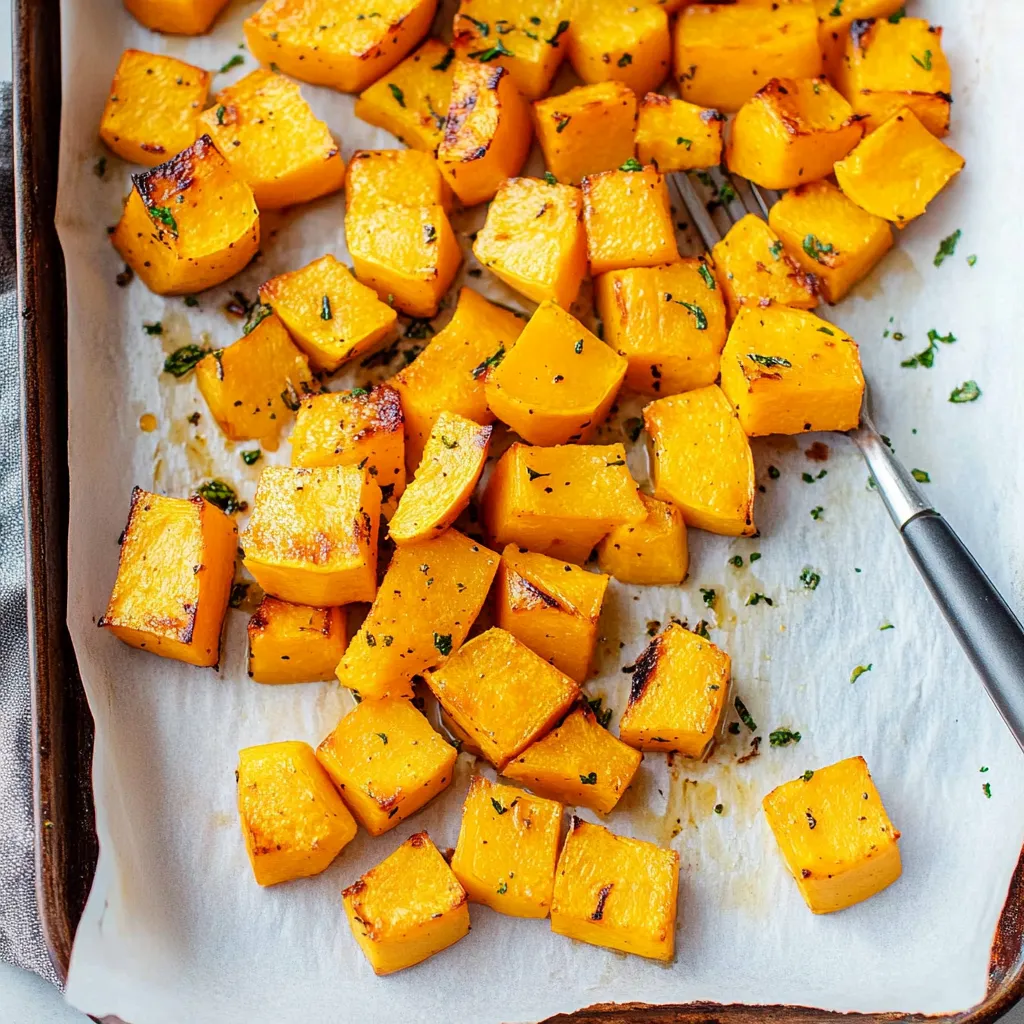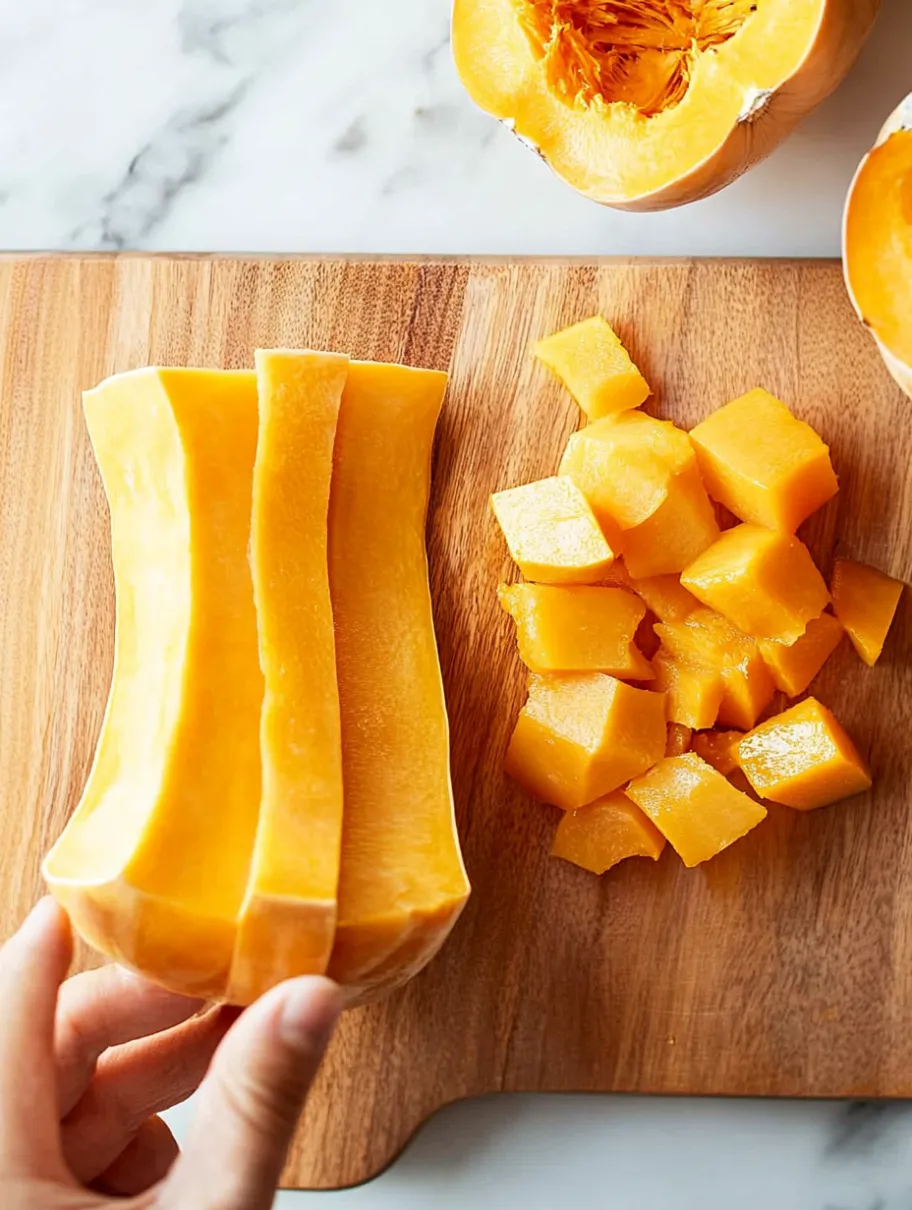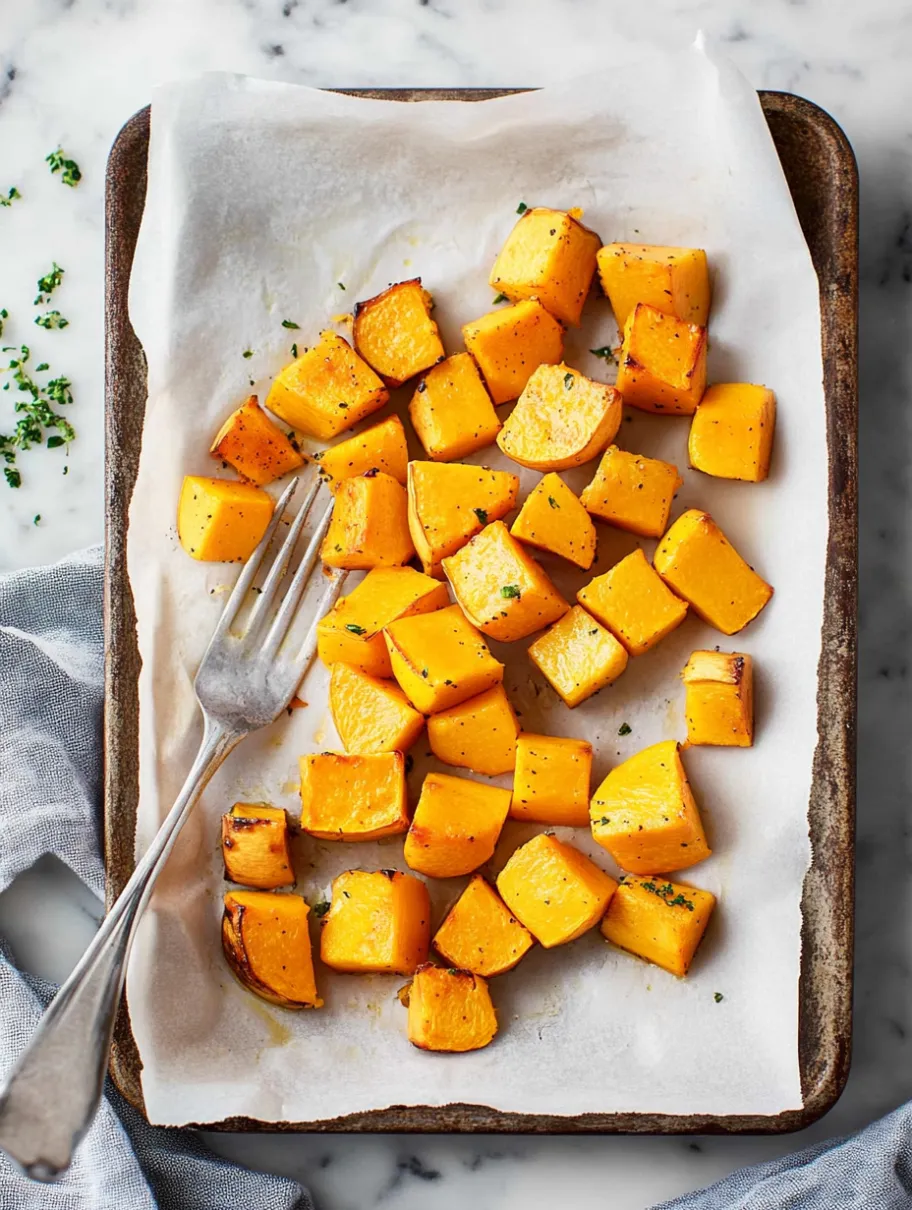 Save
Save
This butternut squash recipe transforms an ordinary vegetable into a caramelized, sweet-savory side dish that's impossible to resist. The combination of maple syrup and warm cinnamon creates a cozy flavor profile that brings out the squash's natural sweetness while fresh rosemary adds a sophisticated aromatic finish.
I first made this roasted butternut squash for a Thanksgiving dinner when I needed a last minute side dish. The maple cinnamon aroma filled my kitchen and guests couldn't stop asking for the recipe. Now it's my go to dish whenever butternut squash is in season.
Ingredients
- Butternut squash about 3 pounds The star of the show with naturally sweet flesh that caramelizes beautifully when roasted
- Extra virgin olive oil Helps the squash roast evenly and develop a golden exterior
- Pure maple syrup Real maple syrup not pancake syrup provides authentic sweetness and helps with caramelization
- Kosher salt Use kosher salt specifically as table salt would make the dish too salty
- Ground cinnamon This warm spice enhances the natural sweetness of both the squash and maple syrup
- Ground black pepper Adds a subtle heat that balances the sweetness
- Fresh rosemary The piney aromatic herb adds complexity and a beautiful finishing touch
Step-by-Step Instructions
- Prepare the oven
- Position your racks in the upper and lower thirds of your oven then preheat to 400°F. This high temperature ensures proper caramelization. Thoroughly coat two baking sheets with nonstick spray to prevent sticking.
- Season the squash
- Place your peeled and cubed butternut squash in a large bowl with plenty of room for tossing. Drizzle with olive oil and maple syrup which will create a delicious glaze as it roasts. Sprinkle with kosher salt cinnamon and black pepper distributing the seasonings evenly over all pieces.
- Arrange for roasting
- Divide the seasoned squash between your two prepared baking sheets ensuring the cubes are in a single layer without overcrowding. This allows proper air circulation which is the secret to getting those caramelized edges. Discard any excess liquid that collects at the bottom of the mixing bowl.
- Roast with care
- Bake for the first 15 minutes then remove pans from the oven to turn each cube with a spatula. Return pans to the oven switching their positions to ensure even cooking. Continue baking for another 10 to 15 minutes until squash is tender with caramelized edges.
- Finish with herbs
- Immediately after removing from the oven sprinkle with fresh chopped rosemary. The warmth of the squash releases the essential oils in the herb creating an amazing aroma and flavor infusion. Serve warm for the best taste experience.

The maple syrup is truly the secret ingredient in this recipe. I once tried substituting honey thinking it would work just as well but the distinct flavor of real maple syrup is what makes this dish special. My family immediately noticed the difference and requested I stick with the original recipe from then on.
Storage Solutions
Proper storage helps maintain the wonderful texture and flavor of roasted butternut squash. After cooling completely transfer leftovers to an airtight container and refrigerate for up to 5 days. The flavors actually deepen overnight making this an excellent make ahead side dish. For longer storage freeze the roasted squash in a single layer on a baking sheet before transferring to a freezer container where it will keep for up to 3 months. While thawed squash will be slightly softer in texture the flavor remains delicious.
Serving Suggestions
This versatile side dish pairs beautifully with so many main courses. Serve alongside roasted chicken or pork tenderloin for a classic comfort meal. For a vegetarian option it makes a wonderful addition to a grain bowl with quinoa goat cheese and fresh greens. During the holiday season this cinnamon roasted butternut squash complements traditional dishes like turkey and stuffing without overpowering them. I also love serving it as part of a fall harvest salad with mixed greens dried cranberries and pepitas.
Creative Variations
The basic recipe is wonderful as is but can be easily customized to suit your taste preferences. For a spicier version add a pinch of cayenne pepper to create a sweet heat contrast. Swap the rosemary for fresh thyme or sage for a different herbal profile. Add chopped pecans or walnuts during the last five minutes of roasting for a delightful crunch element. For a more savory application reduce the maple syrup and add a tablespoon of balsamic vinegar and some grated parmesan cheese after roasting.

Recipe FAQs
- → Can I make this maple cinnamon butternut squash ahead of time?
Yes! You can dice the butternut squash up to 1 day in advance and store the cubes in an airtight container in the refrigerator until ready to bake. The fully cooked dish can be stored in the refrigerator for 4-5 days and reheated when needed.
- → What's the best way to reheat leftover butternut squash?
For the best texture and flavor, reheat in the oven at 350°F or in a skillet over low heat on the stovetop. While microwave reheating is convenient, the oven or skillet methods will help maintain the squash's caramelized exterior better.
- → Can I freeze roasted butternut squash?
Yes, freeze the cooked squash by first placing it in a single layer on baking sheets until frozen, then transfer to an airtight freezer-safe container for up to 3 months. Note that the texture will become somewhat softer after thawing, but the flavor remains delicious.
- → Why is my butternut squash too salty?
This recipe specifically calls for kosher salt, which has larger flakes than table salt. If you substitute table salt in the same quantity, your dish will be too salty. Either use the specified kosher salt or reduce the amount of table salt and adjust to taste at the end.
- → Can I substitute the maple syrup with another sweetener?
While pure maple syrup provides the best flavor profile, you could substitute honey or brown sugar if necessary. Honey will provide a similar consistency though different flavor notes, while brown sugar should be dissolved in a small amount of water first for proper distribution.
- → Why do I need to switch the pans' positions during roasting?
Rotating the pans and switching their positions ensures even cooking, as most ovens have temperature variations between the upper and lower racks. This technique promotes uniform caramelization and prevents some pieces from burning while others remain undercooked.
